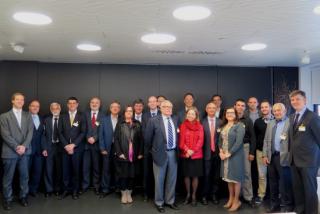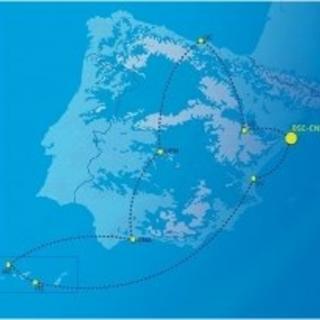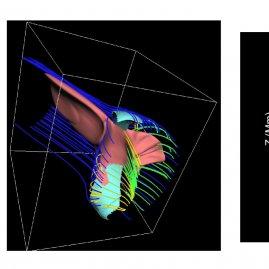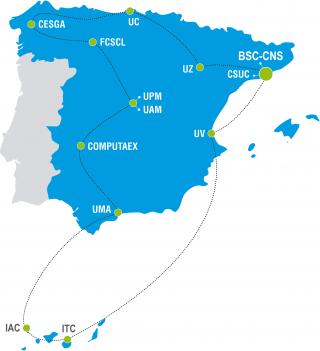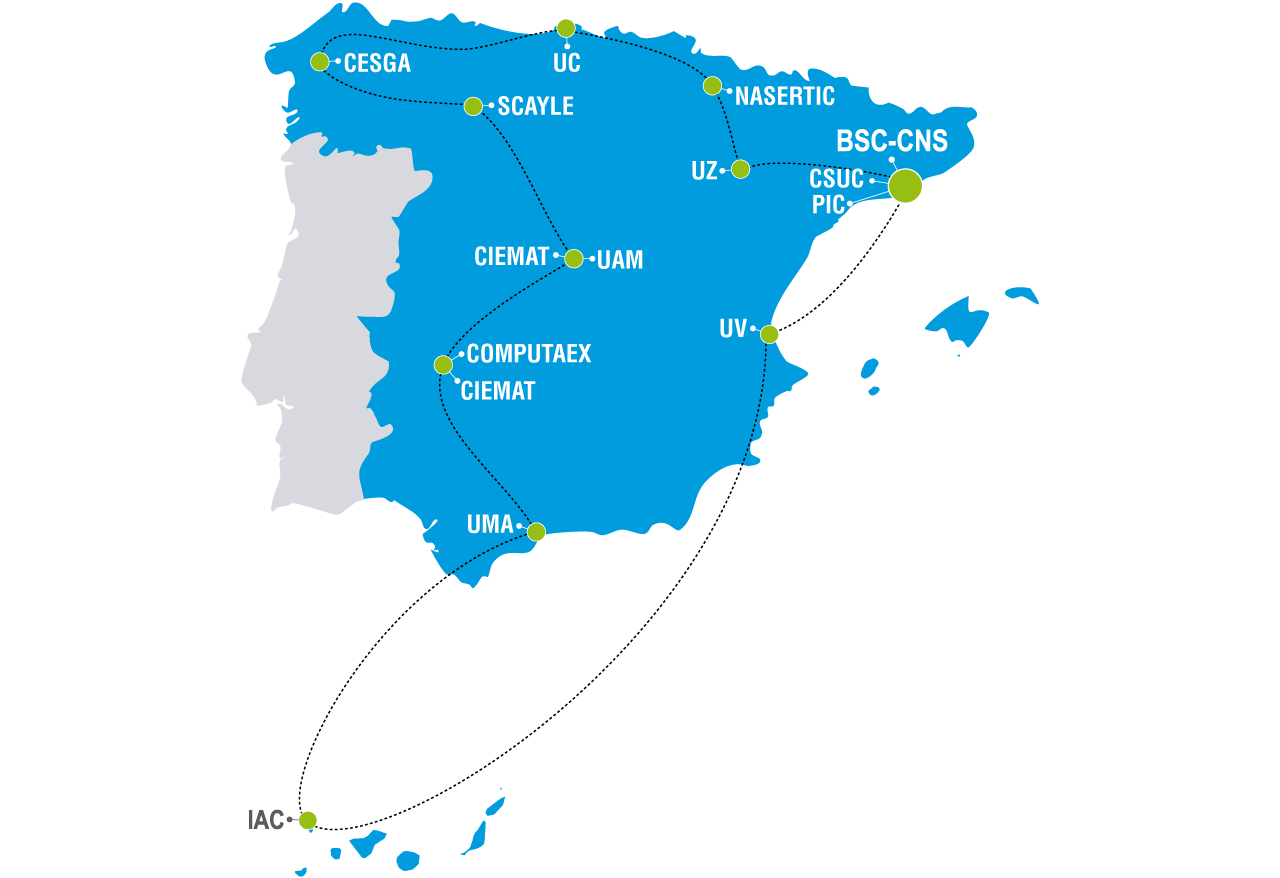Grants related:
LaPalma supercomputer is one of fourteen nodes located on Spanish territory linked together to form the Spanish Supercomputing Network (RES, from Red Española de Supercomputación).
LaPalma node is located at the Center for Astrophysics in La Palma (CALP) in Breña Baja.
The installation of the supercomputer in La Palma was a strategic decision aimed at supporting observations at the Roque de los Muchachos Observatory—especially once the Gran Telescopio CANARIAS (GTC) is in operation—and at reinforcing the development of telecommunications on the island.
The network is financed by the Ministry of Science, Innovation and Universities and coordinated from the Barcelona Supercomputing Center (BSC-CNS), where one of the most powerful computers in Europe, the Mare Nostrum, is located. In fact the La Palma node was previously part of Mare Nostrum.
The other nodes in the network are located at the BSC-CNS, the Fundación Pública Galega Centro Tecnolóxico de Supercomputación de Galicia, the Supercomputing Center of Castilla y León, at the Consorci de Serveis Universitaris de Catalunya, at the Cénits-COMPUTAEX, at Navarra de Servicios y Tecnologías S.A, at Port d'Informació Científica, at Centro de Investigaciones Energéticas, Medioambientales y Tecnológicas, at Instituto de Biocomputación y Física de Sistemas Complejos of University of Zaragoza, and at the Universities of Cantabria, Malaga, Valencia, and Autónoma de Madrid. Each of these supercomputers is capable of high speed data exchange, task distribution and resource optimization.
Technical specification
LaPalma has the following specs:
- Consists of 252 compute nodes
- Each of the compute nodes contains two 2.6 GHz, 8-core Intel Xeon SandyBridge processors
- The total number of cores is 4032
- Max performance is 83.85 TFLOPS
- Gives a total of 8 TB of memory
- A parallel file system that stores up to 1.1 PB of scientific data
The supercomputer is connected to the IAC headquarters in Tenerife by an underwater cable with a bandwidth of 10 Gigabit/s (Gbps), at least 1Gbps of which is guaranteed. With La Palma, communications are accelerated, compensating for the dense information traffic between the Canaries and mainland Spain.
LaPalma has low energy consumption: it requires as little as 84 kW.
The room in which the supercomputer is housed has a reinforced floor capable of supporting a weight of 2,000 kg per square metre. It also has back-up electricity and cooling systems together with advanced air conditioning, security, motor and fire protection systems. LaPalma is kept in this room at a temperature of 24 degrees centigrade.
Applications
Computing time on the node is administered in the following way:
- 50% is assigned by the IAC to its own institution or to those with which an agreement has been reached.
- 50% is assigned by the RES Access Committee. Further information: https://www.res.es/en/access-to-res/
Among other things, the LaPalma node provides resources for research projects with typical Astrophysics computing needs, like magnetism in stellar atmospheres or galaxy formation. Galaxy transformation, which requires comparisons with the universe of nine thousand million years ago, is one such project currently being pursued at the Instituto de Astrofísica de Canarias (IAC).
Highlights
Numerical experiments reveal the behaviour of gigantic solar mass eruptions, known as X-ray jets, which are ejected at hundreds of kilometres per second into interplanetary space.
Funding
The node is co-financed by ERDF Funds 2014-2020 under the framework of the RES Strategic Plan, through the MNLP-RES operation (Ref: ICTS-2017-02-IAC-12)
